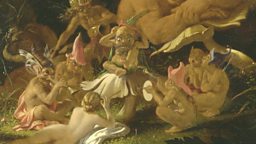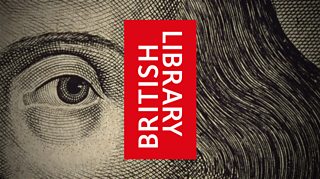Shakespeare Shadows in Salisbury
It’s April, 1837, and Britain is just a few months away from the beginning of the Victorian era. In a theatre in Salisbury the audience were being treated to a “novel” and sometimes risqué entertainment on the theme of the “passions”.
In “Shakespeare’s Dream” spectators enjoyed scenes from the dramatist's more popular plays : The Tempest, Merry Wives, Macbeth, Hamlet, King Lear and Coriolanus.
-
![]()
Much ado near me
Hear more Shakespeare stories on BBC Wiltshire
-
![]()
Shakespeare Festival 2016
The BBC celebrates the genius of the bard

As this playbill preserved from the performance shows, it was a series of “living tableaux” or “tableaux vivant”, where actors make a series of still images to represent a scene. It proved such a success that a few days later it was repeated.
Projected against the darkness of the auditorium like the slides of a magic lantern-show, such “still lives” enthralled spectators.
However not all of these were in the best possible taste, some tableaux vivants were decidedly risqué, featuring virtually nude models or actors, in “unusual” poses.
Shakespeare on dreaming...
At the end of A Midsummer Night’s Dream, Puck turns directly to the audience and delivers a monologue, apologising for anything which might have offended them, and asking them to pretend it was all a dream…
“If we shadows have offended,
Think but this, and all is mended,
That you have but slumbered here
While these visions did appear.
(A Midsummer’s Night’s Dream Act V Sc 1)

Photographic echoes
Another art form was just emerging - one which would similarly ‘freeze’ scenes for posterity.
In 1837, the year in which this playbill was printed, Frenchman Louis Jacques Mandé Daguerre invented the precursor to the photograph, the daguerreotype, a unique image on a silver-plated sheet on copper.
Later in the 19th century the medium of photography would be able to record such amusements, as well as other, more traditional performances of plays.
About Shakespeare on Tour
From the moment they were written through to the present day, Shakespeare’s plays have continued to enthral and inspire audiences. They’ve been performed in venues big and small – including inns, private houses and emerging provincial theatres.

BBC English Regions is building a digital picture which tracks some of the many iconic moments across the country as we follow the ‘explosion’ in the performance of The Bard’s plays, from his own lifetime to recent times.
Drawing on fascinating new research from Records of Early English Drama (REED), plus the British Library's extensive collection of playbills, as well as expertise from De Montfort University and the Arts and Humanities Research Council, Shakespeare on Tour is a unique timeline of iconic moments of those performances, starting with his own troupe of actors, to highlights from more recent times. Listen out for stories on Shakespeare’s legacy on your BBC Local Radio station from Monday 21 March, 2016.
You never know - you might find evidence of Shakespeare’s footsteps close to home…
Craig Henderson, BBC English Regions
Related Links
-
![]()
Shakespeare Lives
The nation’s greatest performing arts institutions mark 400 years since the Bard's death
Shakespeare on Tour: Around Wiltshire
-
![]()
'Calamity' overtakes the Scottish Play
Shakespeare delayed in Salisbury
-
![]()
Shakespeare's men perform before the King at Wilton in Salisbury
A royal audience in Salisbury
-
![]()
Marlborough pays a bargain basement price for Shakespeare’s Acting Company
The prosperous market town was a popular venue for Shakespeare’s company of actors
Shakespeare on Tour: Around the country
-
![]()
A wealthy host attracts Shakespeare's actors to Yorkshire
Shakespeare’s King’s Men visit the Clifford family at Londesborough Hall
-
![]()
Norwich gives Shakespeare's company the cold shoulder
Shakespeare's players paid 40 shillings not to perform
-
![]()
Celebrated young actor stars as Hamlet
Child prodigy actor who took theatres by storm in 1804 stars as Hamlet in Stafford
-
![]()
Much Ado about Dracula?
Much Ado About Nothing at the London Lyceum 1883










